We put the Xiaomi 15 Ultra through our rigorous DXOMARK Camera test suite to measure its performance in photo, video, and zoom quality from an end-user perspective. This article breaks down how the device fared in a variety of tests and several common use cases and is intended to highlight the most important results of our testing with an extract of the captured data.
Overview
Key camera specifications:
- Primary: 50MP 1.0″ sensor, 3.2 µm (4-in-1) pixels,23mm equivalent f/1.63 aperture lens, OIS
- Tele 1: 50MP, 1.4 µm (4-in-1) pixels, 70mm equivalent f/1.8-aperture lens, OIS
- Tele 2: 200MP, 2.24 µm pixels, 100mm equivalent f/2.6-aperture lens (periscope design), OIS
- Ultra-wide: 50MP, 1.28 µm (4-in-1) pixels, 14mm f/2.2-aperture lens
Scoring
Sub-scores and attributes included in the calculations of the global score.
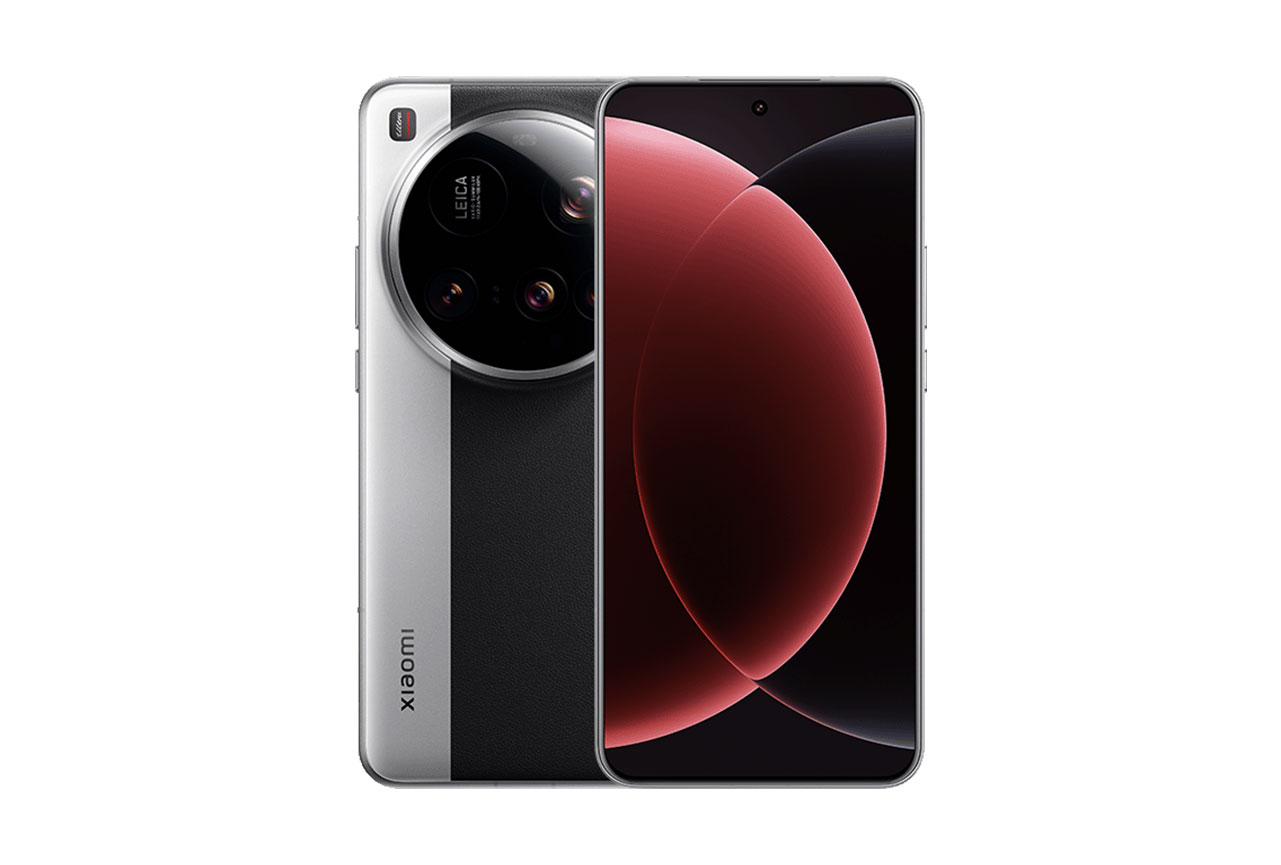
Xiaomi 15 Ultra

153

camera
Use cases & Conditions
Use case scores indicate the product performance in specific situations. They are not included in the overall score calculations.
Outdoor
Photos & videos shot in bright light conditions (≥1000 lux)
Indoor
Photos & videos shot in good lighting conditions (≥100lux)
Lowlight
Photos & videos shot in low lighting conditions (<100 lux)
Friends & Family
Portrait and group photo & videos
 13th
13th
4. Apple iPhone 16 Pro Max
157
10. Apple iPhone 15 Pro Max
154
22. Honor Magic4 Ultimate
147
26. Apple iPhone 14 Pro Max
146
26. Motorola Edge 50 Ultra
146
26. Samsung Galaxy S25 Ultra
146
32. Samsung Galaxy S24 Ultra
144
34. Apple iPhone 13 Pro Max
141
34. Google Pixel 9 Pro Fold
141
38. Samsung Galaxy S23 Ultra
140
43. Tecno Camon 40 Pro 5G
138
45. Vivo X80 Pro (Snapdragon)
137
52. Samsung Galaxy S22 Ultra (Snapdragon)
135
52. Vivo X80 Pro (MediaTek)
135
59. Samsung Galaxy Z Fold6
133
59. Samsung Galaxy S24+ (Exynos)
133
59. Samsung Galaxy S24 FE
133
59. Samsung Galaxy S24 (Exynos)
133
69. Samsung Galaxy Z Flip6
132
70. Apple iPhone 12 Pro Max
131
70. Samsung Galaxy S22 Ultra (Exynos)
131
81. Samsung Galaxy Z Fold5
128
83. Asus Smartphone for Snapdragon Insiders
127
83. Samsung Galaxy Z Flip5
127
83. Samsung Galaxy S23 FE
127
88. Vivo X70 Pro (MediaTek)
126
92. Asus Zenfone 11 Ultra
125
92. Samsung Galaxy S22+ (Exynos)
125
97. Samsung Galaxy Z Fold4
124
100. Apple iPhone 11 Pro Max
122
105. Xiaomi Redmi Note 13 Pro Plus 5G
121
106. Samsung Galaxy Z Fold3 5G
120
106. Samsung Galaxy S22 (Exynos)
120
106. Xiaomi Redmi Note 13 Pro 5G
120
111. Xiaomi Redmi Note 14 Pro+ 5G
118
114. Apple iPhone 12 mini
117
114. Samsung Galaxy S21 Ultra 5G (Snapdragon)
117
114. Samsung Galaxy S21 FE 5G (Snapdragon)
117
114. Samsung Galaxy S21 5G (Snapdragon)
117
120. Vivo X60 Pro 5G (Snapdragon)
116
123. Motorola Edge 50 Neo
115
123. Samsung Galaxy S21+ 5G (Snapdragon)
115
123. Samsung Galaxy S21 Ultra 5G (Exynos)
115
133. Crosscall Stellar-X5
113
133. Xiaomi Redmi Note 12 Pro+ 5G
113
137. Samsung Galaxy Z Flip4
112
139. Samsung Galaxy Z Flip3 5G
111
139. Samsung Galaxy S21+ 5G (Exynos)
111
139. Samsung Galaxy S21 5G (Exynos)
111
144. Samsung Galaxy A55 5G
108
144. Vivo X60 Pro 5G (Exynos)
108
149. Samsung Galaxy A54 5G
107
150. Xiaomi Redmi Note 14 Pro 5G
106
153. Samsung Galaxy A35 5G
104
154. Motorola Edge 40 Neo
103
154. Xiaomi Redmi Note 14 5G
103
156. Xiaomi Redmi Note 12 Pro 5G
102
158. Motorola Edge 30 Pro
101
160. Apple iPhone SE (2022)
100
162. Motorola Moto g75 5G
96
168. Samsung Galaxy A34 5G
92
168. Samsung Galaxy A25 5G
92
172. Xiaomi Redmi Note 13 5G
91
174. Motorola Moto g85 5G
88
174. Samsung Galaxy A52s 5G
88
174. Samsung Galaxy A52 5G
88
178. Motorola moto g54 5G
85
178. Samsung Galaxy A33 5G
85
178. Samsung Galaxy A16 LTE
85
181. Honor Magic6 Lite (5300 mAh)
84
181. Xiaomi Redmi Note 14
84
184. Samsung Galaxy A15 5G
83
186. Samsung Galaxy A15 LTE
81
187. Samsung Galaxy A53 5G
79
189. Xiaomi Redmi Note 11 Pro 5G
78
191. Samsung Galaxy A16 5G
77
193. Motorola Moto G35 5G
75
193. Xiaomi Redmi Note 13
75
196. Honor Magic5 Lite 5G
74
198. Samsung Galaxy A23 5G
70
199. Xiaomi Redmi Note 12 5G
69
202. Motorola moto g34 5G
67
202. Samsung Galaxy A14 5G
67
204. Motorola Moto G62 5G
66
205. Xiaomi Redmi Note 11S 5G
65
207. Xiaomi Redmi Note 12
63
212. Honor Magic4 Lite 5G
61
214. Xiaomi Redmi Note 11
60
216. Crosscall Stellar-M6
59
223. Xiaomi Redmi 10 2022
51
225. Samsung Galaxy A22 5G
48
 12th
12th
4. Apple iPhone 16 Pro Max
157
10. Apple iPhone 15 Pro Max
154
20. Honor Magic4 Ultimate
147
23. Apple iPhone 14 Pro Max
146
23. Motorola Edge 50 Ultra
146
23. Samsung Galaxy S25 Ultra
146
28. Samsung Galaxy S24 Ultra
144
30. Apple iPhone 13 Pro Max
141
30. Google Pixel 9 Pro Fold
141
34. Samsung Galaxy S23 Ultra
140
38. Vivo X80 Pro (Snapdragon)
137
43. Samsung Galaxy S22 Ultra (Snapdragon)
135
43. Vivo X80 Pro (MediaTek)
135
48. Samsung Galaxy Z Fold6
133
48. Samsung Galaxy S24+ (Exynos)
133
53. Samsung Galaxy Z Flip6
132
54. Apple iPhone 12 Pro Max
131
54. Samsung Galaxy S22 Ultra (Exynos)
131
61. Samsung Galaxy Z Fold5
128
63. Asus Smartphone for Snapdragon Insiders
127
63. Samsung Galaxy Z Flip5
127
68. Asus Zenfone 11 Ultra
125
68. Samsung Galaxy S22+ (Exynos)
125
71. Samsung Galaxy Z Fold4
124
73. Apple iPhone 11 Pro Max
122
76. Samsung Galaxy Z Fold3 5G
120
81. Samsung Galaxy S21 Ultra 5G (Snapdragon)
117
83. Samsung Galaxy S21+ 5G (Snapdragon)
115
83. Samsung Galaxy S21 Ultra 5G (Exynos)
115
89. Samsung Galaxy Z Flip4
112
90. Samsung Galaxy Z Flip3 5G
111
90. Samsung Galaxy S21+ 5G (Exynos)
111
Pros
- High texture levels and low noise in photo
- Accurate exposure and wide dynamic range in photo and video
- Accurate color rendering and pleasant white balance in bright light photo and video
- High levels of detail across all zoom settings
- Fairly low noise in bright light video
Cons
- Occasional warm color casts in photo and video
- Limited depth of field results in blurred background faces in group shots
- Occasional contrast issues in scenes with strong backlighting
- Artifacts, including ghosting and flare
- Loss of texture in some shots, especially in low light
- Occasional autofocus stepping
- Less effective video stabilization than some competitors
The Xiaomi Ultra 15 delivered a very good performance in the DXOMARK Camera tests, achieving the best results of a Xiaomi device to date. The new flagship comes with impressive imaging specs, including a total of four image sensors, with pixel counts from 50MP to a whopping 200MP, photo and video HDR modes, as well as a host of other features and modes. In terms of camera hardware, the main improvements over the predecessor are the pixel count on the long tele camera (now 200MP sensor) and the new Qualcomm Snapdragon 8 Elite chipset.
In our photo tests, overall image quality was excellent, with a wide dynamic range, low noise and nice colors. However, the Xiaomi’s main camera lagged behind the best devices in some areas. Some color casts were visible, the narrow depth of field made it difficult to keep all subjects in group shots in focus, and our testers noticed some instabilities between consecutives shots of a series.
The tele zoom is the Xiaomi’s main strength, with excellent performance across all tele-zoom settings. In our tests, the 15 Ultra achieved the best results for tele zoom to date and was particularly impressive at long-range tele settings. However, at the opposite end of the zoom spectrum, ultra-wide results lagged behind other flagships in some test categories.
Video performance was pretty strong, too, thanks to good exposure and a wide dynamic range, nice colors and low noise. However it could not quite match the best competitors in terms of exposure and color adaptation during scene changes, autofocus, and texture. Video stabilization did a good job at keeping video footage smooth and stable, but was less effective than on the best flagship models, such as the Apple iPhone 16 Pro Max or the Huawei Pura 70 Ultra.
Please note that the Xiaomi 15 Ultra sample photos and videos were captured and analyzed in HDR mode, as the Xiaomi HDR format is compatible with Google’s. The Huawei and Apple sample shots used in this article were captured and analyzed in their respective HDR formats, but might not be displayed in HDR format on other devices and in web browsers, due to their HDR formats being proprietary.
The Xiaomi 15 Ultra was capable of capturing overall nice portrait shots, with realistic skin tones and good exposure across all light conditions. Still portraits also had high levels of fine detail. The camera’s main drawback in terms of portraiture was its narrow depth of field, which made it difficult to keep all subjects in group shots in focus. Subjects towards the back of a group scene were often blurry.

Xiaomi 15 Ultra – Portraits feature nice colors, good exposure and wide dynamic range
In low light, the Xiaomi 15 Ultra delivered a nice imaging experience, with the camera providing a warm white balance and impressive noise reduction. Exposure was spot on and a wide dynamic range ensured good detail in both the shadow and highlight areas of the frame. On the downside, colors could be oversaturated on occasion, and warm color casts could impact the image output. While the balance between texture retention and noise reduction was impressive for still images, low-light video footage lacked detail and fine textures. When recording video in dim conditions, our testers also noticed some exposure and color adaptation issues when the content of the scene changed.

Xiaomi 15 Ultra – Good exposure, saturated colors with warm cast
Test summary
About DXOMARK Camera tests: DXOMARK’s Camera evaluations take place in laboratories and in real-world situations using a wide variety of subjects. The scores rely on objective tests for which the results are calculated directly by measurement software on our laboratory setups, and on perceptual tests in which a sophisticated set of metrics allow a panel of image experts to compare aspects of image quality that require human judgment. Testing a smartphone involves a team of engineers and technicians for about a week. Photo, Zoom, and Video quality are scored separately and then combined into an Overall score for comparison among the cameras in different devices. For more information about the DXOMARK Camera protocol, click here. More details on smartphone camera scores are available here. The following section gathers key elements of DXOMARK’s exhaustive tests and analyses. Full performance evaluations are available upon request. Please contact us on how to receive a full report.
Xiaomi 15 Ultra Camera Scores
This graph compares DXOMARK photo, zoom and video scores between the tested device and references. Average and maximum scores of the price segment are also indicated. Average and maximum scores for each price segment are computed based on the DXOMARK database of devices tested.
Photo
158
Huawei Pura 70 Ultra
Huawei Pura 70 Ultra
About DXOMARK Camera Photo tests
For scoring and analysis, DXOMARK engineers capture and evaluate more than 2,600 test images both in controlled lab environments and in outdoor, indoor and low-light natural scenes, using the camera’s default settings. The photo protocol is designed to take into account the main use cases and is based on typical shooting scenarios, such as portraits, family, and landscape photography. The evaluation is performed by visually inspecting images against a reference of natural scenes, and by running objective measurements on images of charts captured in the lab under different lighting conditions from 1 to 1,000+ lux and color temperatures from 2,300K to 6,500K.
The 15 Ultra delivered an excellent performance in photo mode, making it a great option for any ambitious stills photographer. The HDR format delivered very good contrast and a wide dynamic range, ensuring good exposure and nice color rendering. The level of captured detail was excellent, preserving fine detail with a natural look, without oversharpening. In addition, noise levels were low, even when shooting in low light. This made for an excellent texture/noise trade-off.
Colors were generally nice, with natural skin tones in portrait shots. However, under typical indoor lighting and in low light, color casts could become visible. Moving subjects in low-light scenes showed motion blur, and our testers also noticed some local contrast issues in scenes with strong backlighting. While the autofocus was mostly reliable and stable, the camera’s primary camera has a very wide aperture, which is great for light collection, but the resulting narrow depth of field made it difficult to keep all subjects in group shots in focus. People at the back were often out of focus.
Xiaomi 15 Ultra Photo scores
The photo tests analyze image quality attributes such as exposure, color, texture, and noise in various light conditions. Autofocus performances and the presence of artifacts on all images captured in controlled lab conditions and in real-life images are also evaluated. All these attributes have a significant impact on the final quality of the images captured with the tested device and can help to understand the camera’s main strengths and weaknesses.
Close-Up
Close-up is the third use case score introduced with DXOMARK Camera version 5. It evaluates the camera’s ability to capture detail at subject distances below 10cm and magnifications as close as possible to 1:1.
In our tests, the 15 Ultra’s close-up mode did a very good job, capturing good levels of details at close distance. A slight loss of sharpness could be observed at very close shooting distances, but this is similar on most competing devices.

Xiaomi 15 Ultra – Good details, accurate exposure, and saturated colors

Apple iPhone 16 Pro Max – Good detail, accurate exposure, and natural colors

Exposure
124
Huawei Pura 70 Ultra
Huawei Pura 70 Ultra
Exposure is one of the key attributes for technically good pictures. The main attribute evaluated is the brightness of the main subject through various use cases such as landscape, portrait, or still life. Other factors evaluated are the contrast and the dynamic range, eg. the ability to render visible details in both bright and dark areas of the image. Repeatability is also important because it demonstrates the camera’s ability to provide the same rendering when shooting several images of the same scene.
The Xiaomi delivered very well-exposed pictures in most conditions. Exposure was also very stable and spot-on for portrait, landscape, and still-life shots alike. The camera’s wide dynamic range allowed for good image quality in difficult high-contrast conditions, including strongly backlit scenes. Xiaomi’s HDR rendering was capable of creating nice contrast, similar to what we’ve seen on the Huawei Pura 70 Ultra and Apple iPhone 16 Pro Max.

Xiaomi 15 Ultra – Accurate exposure, wide dynamic range, and nice contrast

Huawei Pura 70 Ultra – Accurate exposure, wide dynamic range, and good contrast

Apple iPhone 16 Pro Max – Accurate exposure, wide dynamic range, and good contrast

Color
126
Apple iPhone 16 Pro
Apple iPhone 16 Pro
Color is one of the key attributes for technically good pictures. The image quality attributes analyzed are skin-tone rendering, white balance, color shading, and repeatability. For color and skin tone rendering, we penalize unnatural colors but we respect a manufacturer’s choice of color signature.
The 15 Ultra comes with Xiaomi’s signature color rendering, providing neutral but saturated colors in most conditions. Colors were nice, with neutral white balance and accurate skin tones when taking pictures in bright light. Under typical indoor conditions and in low light, colors remained saturated, but our testers observed some, mostly warm, color casts creeping in. In some low-light captures we found the saturation to be too strong, resulting in a slightly unnatural effect.
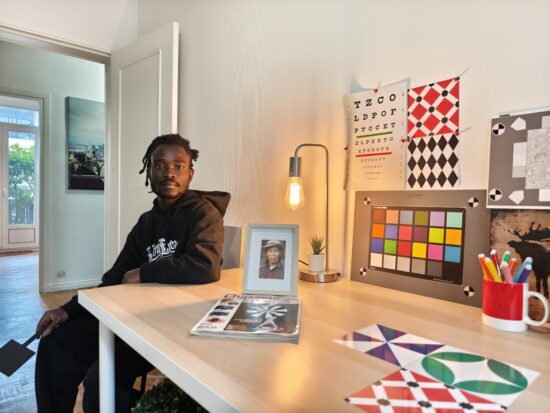
Xiaomi 15 Ultra – Nice skin tones, saturated colors, warm white balance
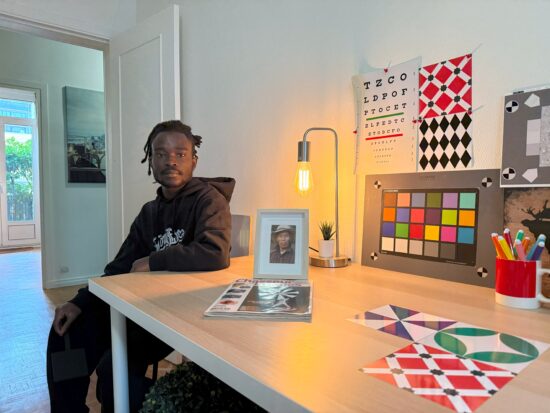
Apple iPhone 16 Pro Max – Nice skin tones, natural colors, neutral white balance

Autofocus
104
Huawei Pura 70 Ultra
Huawei Pura 70 Ultra
Autofocus tests concentrate on focus accuracy, focus repeatability, shooting time delay, and depth of field. Shooting delay is the difference between the time the user presses the capture button and the time the image is actually taken. It includes focusing speed and the capability of the device to capture images at the right time, what is called ‘zero shutter lag’ capability. Even if a shallow depth of field can be pleasant for a single subject portrait or close-up shot, it can also be a problem in some specific conditions such as group portraits; Both situations are tested. Focus accuracy is also evaluated in all the real-life images taken, from infinity to close-up objects and in low light to outdoor conditions.
Unlike its predecessor, the 14 Ultra, the Xiaomi 15 Ultra is capable of delivering zero shutter lag with a reliable autofocus. We noticed very few autofocus failures in bright light, but when shooting in low light, the autofocus could be slower than the best-in-class devices. Overall the autofocus was quite stable across consecutive shots, with focus reliably locking onto the subject. This said, the primary camera’s quite narrow depth of field meant that subjects not in the focal plane could be out of focus.
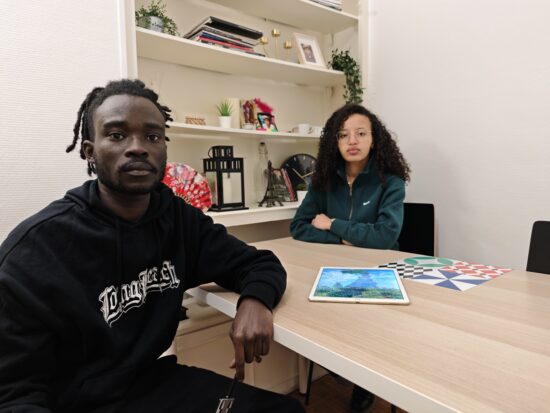
Xiaomi 15 Ultra – Good focus on front subject, background subject out of focus
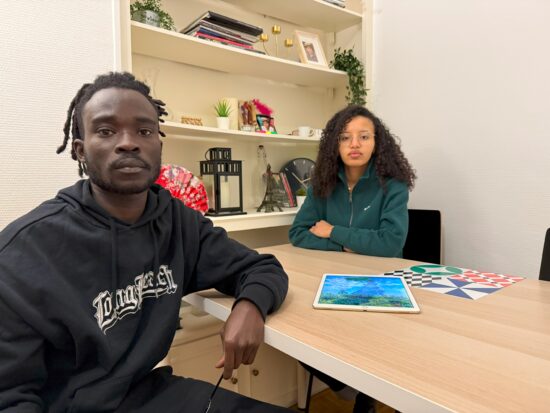
Apple iPhone 16 Pro Max – Good focus on front subject, background subject slightly out of focus
Edge acutance irregularity and average shooting delay along all tested conditions
Autofocus irregularity and speed: 20Lux Δ7EV Tungsten Handheld
Texture tests analyze the level of details and the texture of subjects in the images taken in the lab as well as in real-life scenarios. For natural shots, particular attention is paid to the level of details in the bright and dark areas of the image. Objective measurements are performed on chart images taken in various lighting conditions from 1 to 1000 lux and different kinds of dynamic range conditions. The charts used are the proprietary DXOMARK chart (DMC) and the Dead Leaves chart.
DXOMARK CHART (DMC) detail preservation score vs lux levels for tripod and handheld conditions
This graph shows the evolution of the DMC detail preservation score with the level of lux, for two holding conditions. DMC detail preservation score is derived from an AI-based metric trained to evaluate texture and details rendering on a selection of crops of our DXOMARK chart.
The Xiaomi 15 Ultra captured high levels of detail in most conditions, especially when shooting in bright light. Fine detail was preserved well, without being oversharpened, for a natural look of textures. Texture performance in bright light was equal to, or even better than on the Huawei Pura 70 Ultra, but fine detail looked slightly more natural. This said, some detail was lost in low-light shooting. In addition, motion blur was often noticeable on moving subjects in low light.

Xiaomi 15 Ultra – Outdoor detail

Xiaomi 15 Ultra – Very fine detail

Huawei Pura 70 Ultra – Outdoor detail

Huawei Pura 70 Ultra – Good detail

Apple iPhone 16 Pro Max – Outdoor detail

Apple iPhone 16 Pro Max – Loss of fine detail

Noise
114
Huawei Pura 70 Ultra
Huawei Pura 70 Ultra
Noise tests analyze various attributes of noise such as intensity, chromaticity, grain, structure on real-life images as well as images of charts taken in the lab. For natural images, particular attention is paid to the noise on faces, landscapes, but also on dark areas and high dynamic range conditions. Noise on moving objects is also evaluated on natural images. Objective measurements are performed on images of charts taken in various conditions from 1 to 1000 lux and different kinds of dynamic range conditions. The chart used is the Dead Leaves chart and the standardized measurement such as Visual Noise derived from ISO 15739.
Visual noise evolution with illuminance levels in handheld condition
This graph shows the evolution of visual noise metric with the level of lux in handheld condition. The visual noise metric is the mean of visual noise measurement on all patches of the Dead Leaves chart in the AFHDR setup. DXOMARK visual noise measurement is derived from ISO15739 standard.
Image noise was well under control in most shooting conditions, with only some barely noticeable fine luminance noise in outdoor and indoor scenes. Even in low light, noise was hardly noticeable, with images retaining good levels of detail.

Xiaomi 15 Ultra – Low light noise

Xiaomi 15 Ultra – Very fine luminance noise

Apple iPhone 16 Pro Max – Low light noise

Apple iPhone 16 Pro Max – Luminance noise

Artifacts
79
Xiaomi Redmi 12 5G
Xiaomi Redmi 12 5G
The artifacts evaluation looks at lens shading, chromatic aberrations, geometrical distortion, edges ringing, halos, ghosting, quantization, unexpected color hue shifts, among others type of possible unnatural effects on photos. The more severe and the more frequent the artifact, the higher the point deduction on the score. The main artifacts observed and corresponding point loss are listed below.
Main photo artifacts penalties
The most noticeable artifacts on the Xiaomi 15 Ultra were ghosting on moving subjects in low light and flare. In some scenes, our testers also noticed a hue shift effect around clipped highlight areas. Thanks to the camera’s well-balanced detail sharpening, ringing was well under control.
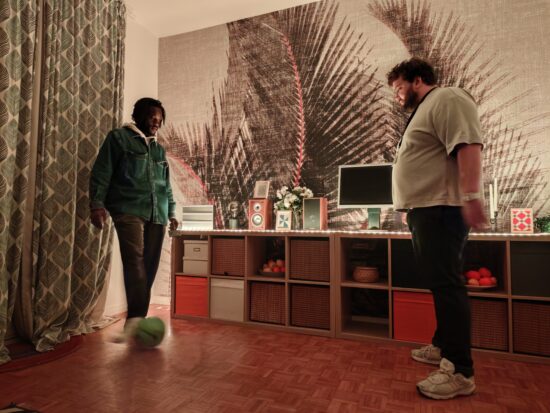
Xiaomi 15 Ultra – Artifacts

Xiaomi 15 Ultra – Ghosting on moving subjects in low light

Xiaomi 15 Ultra – Artifacts

Bokeh
80
Huawei Pura 70 Ultra
Huawei Pura 70 Ultra
Bokeh is tested in one dedicated mode, usually portrait or aperture mode, and analyzed by visually inspecting all the images captured in the lab and in natural conditions. The goal is to reproduce portrait photography comparable to one taken with a DLSR and a wide aperture. The main image quality attributes paid attention to are depth estimation, artifacts, blur gradient, and the shape of the bokeh blur spotlights. Portrait image quality attributes (exposure, color, texture) are also taken into account.
The Xiaomi 15 Ultra’s bokeh mode captured natural-looking images. Subject isolation was mostly natural, with a soft-looking simulated aperture and natural blur gradient. However, some depth estimation artifacts could be noticeable, in addition to some slight exposure and artifact instabilities across consecutive shots.

Xiaomi 15 Ultra – Soft bokeh effects, slight depth artifacts.

Huawei Pura 70 Ultra – Natural bokeh effect, very slight depth artifacts

Apple iPhone 16 Pro Max – Natural simulated aperture, very slight depth artifacts
Preview
89
Apple iPhone 16 Pro
Apple iPhone 16 Pro
Preview tests analyze the image quality of the camera app’s preview of the image, with particular attention paid to the difference between the capture and the preview, especially regarding dynamic range and the application of the bokeh effect. Also evaluated is the smoothness of the exposure, color and focus adaptation when zooming from the minimal to the maximal zoom factor available. The preview frame rate is measured using the LED Universal Timer.
Transitions between the Xiaomi 15 Ultra’s different camera modules were smooth in the preview image on the display. In addition, the preview image mostly matched the final capture in most shooting conditions. This said, in challenging conditions, such as strongly backlit scenes or in very low light, texture or dynamic range could vary between preview and capture.
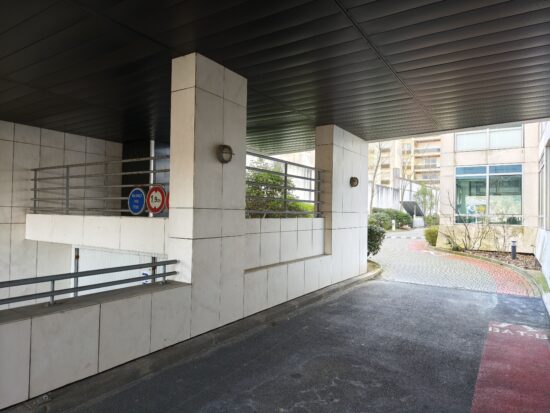
Xiaomi 15 Ultra – Capture – Very similar to preview
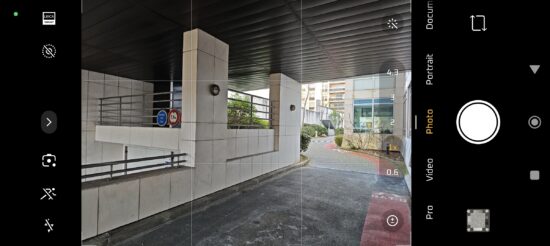
Xiaomi 15 Ultra – Preview
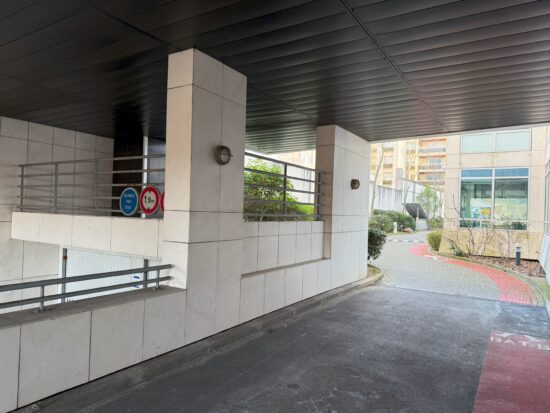
Apple iPhone 16 Pro Max – Capture – Very similar to preview
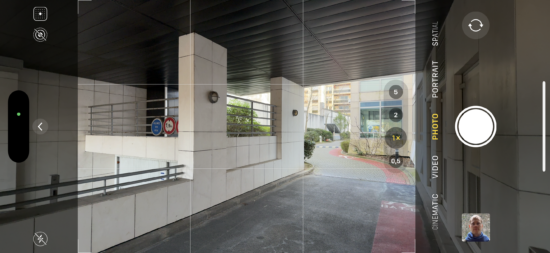
Apple iPhone 16 Pro Max – Preview
About DXOMARK Camera Zoom tests
DXOMARK engineers capture and evaluate over 400 test images in controlled lab environments and in outdoor, indoor, and low-light natural scenes, using the camera’s default settings and pinch zoom at various zoom factors from ultra wide to very long-range zoom. The evaluation is performed by visually inspecting the images against a reference of natural scenes, and by running objective measurements of chart mages captured in the lab under different conditions from 20 to 1000 lux and color temperatures from 2300K to 6500K.
Zoom performance is the Xiaomi 15 Ultra’s main strong point. Thanks to the combination of two tele modules (50MP and 200MP periscope), the 15 Ultra offered very high levels of tele zoom detail, from the primary camera to the long-range tele. The Xiaomi achieved the best score to date for tele zoom. The ultra-wide camera also captured fairly good image quality but lagged slightly behind the best-in-class competitors.
Xiaomi 15 Ultra Zoom Scores
This graph illustrates the relative scores for the different zoom ranges evaluated. The abscissa is expressed in 35mm equivalent focal length. Zooming-in scores are displayed on the right and Zooming-out scores on the left.

Wide
117
Huawei Pura 70 Ultra
Huawei Pura 70 Ultra
These tests analyze the performance of the ultra-wide camera at several focal lengths from 12 mm to 20 mm. All image quality attributes are evaluated, with particular attention paid to such artifacts as chromatic aberrations, lens softness, and distortion. Pictures below are an extract of tested scenes.
The 15 Ultra’s 13mm/50MP ultra-wide camera delivered good image quality overall. Distortion on ultra-wide shots was fairly well under control, exposure was mostly accurate and, despite the occasional color cast, colors were nice. Detail levels could be a little low in some conditions. Fine detail was lost, especially in low-light scenes. Our testers also observed some image noise in indoor and low-light shots.

Xiaomi 15 Ultra – Ultra-wide

Xiaomi 15 Ultra – Loss of fine detail, good exposure, warm color rendering

Huawei Pura 70 Ultra – Ultra-wide

Huawei Pura 70 Ultra – Loss of fine detail, good exposure, neutral white balance

Apple iPhone 16 Pro Max – Ultra-wide

Apple iPhone 16 Pro Max – Loss of detail, good exposure, neutral white balance
All image quality attributes are evaluated at focal lengths from approximately 40 mm to 300 mm, with particular attention paid to texture and detail. The score is derived from a number of objective measurements in the lab and perceptual analysis of real-life images.
DXOMARK CHART (DMC) detail preservation score per focal length
This graph shows the evolution of the DMC detail preservation score with respect to the full-frame equivalent focal length for different light conditions. The x-axis represents the equivalent focal length measured for each corresponding shooting distance and the y-axis represents the maximum details preservation metric score: higher value means better quality. Large dots correspond to zoom ratio available in the user interface of the camera application.
DXOMARK CHART (DMC) detail preservation score per focal length
This graph shows the evolution of the DMC detail preservation score with respect to the full-frame equivalent focal length for different light conditions. The x-axis represents the equivalent focal length measured for each corresponding shooting distance and the y-axis represents the maximum details preservation metric score: higher value means better quality. Large dots correspond to zoom ratio available in the user interface of the camera application.
DXOMARK CHART (DMC) detail preservation score per focal length
This graph shows the evolution of the DMC detail preservation score with respect to the full-frame equivalent focal length for different light conditions. The x-axis represents the equivalent focal length measured for each corresponding shooting distance and the y-axis represents the maximum details preservation metric score: higher value means better quality. Large dots correspond to zoom ratio available in the user interface of the camera application.
DXOMARK CHART (DMC) detail preservation score per focal length
This graph shows the evolution of the DMC detail preservation score with respect to the full-frame equivalent focal length for different light conditions. The x-axis represents the equivalent focal length measured for each corresponding shooting distance and the y-axis represents the maximum details preservation metric score: higher value means better quality. Large dots correspond to zoom ratio available in the user interface of the camera application.
The Xiaomi’s two tele camera modules delivered impressive levels of detail from close to long-range tele, outperforming even the best competitors in bright light. In addition, image noise was well under control, earning the Xiaomi the top score in the tele zoom category. On the downside, some slight highlight clipping could be noticeable in difficult conditions, for example backlit scenes. We also observed a reduction of detail in low light, but overall tele zoom performance was impressive.

Xiaomi 15 Ultra – Long-range tele

Xiaomi 15 Ultra – Very good detail

Huawei Pura 70 Ultra – Long-range tele

Huawei Pura 70 Ultra – Loss of detail

Apple iPhone 16 Pro Max – Long-range tele

Apple iPhone 16 Pro Max – Loss of detail
Video
134
Apple iPhone 16 Pro
Apple iPhone 16 Pro
About DXOMARK Camera Video tests
DXOMARK engineers capture and evaluate more than 2.5 hours of video in controlled lab environments and in natural low-light, indoor and outdoor scenes, using the camera’s default settings. The evaluation consists of visually inspecting natural videos taken in various conditions and running objective measurements on videos of charts recorded in the lab under different conditions from 1 to 1000+ lux and color temperatures from 2,300K to 6,500K.
The Xiaomi 15 Ultra video mode offers a range of resolution and frame rate settings, up to 8K/30fps and 4K/120fps. Dolby Vision 10-bit HDR recording is available at 4K/60fps and at 1080p resolution settings. The DXOMARK video tests were performed at 4K/60fps with Dolby Vision HDR, which provided the overall best results with image stabilization.
With these settings in our tests, the 15 Ultra delivered good video quality, with good exposure and nice colors. However, it lagged slightly behind the best competitors in terms of detail, noise, and stabilization. Our testers also occasionally found video recording to be slightly unstable, with exposure and color adaptation issues in changing scenes, as well as some autofocus instabilities with stepping.
Xiaomi 15 Ultra Video scores

Exposure
107
Oppo Find X8 Pro
Oppo Find X8 Pro
Exposure tests evaluate the brightness of the main subject and the dynamic range, eg. the ability to render visible details in both bright and dark areas of the image. Stability and temporal adaption of the exposure are also analyzed.
Video exposure was accurate, and the dynamic range of recorded footage was wide in most conditions. We did observe some highlight clipping when shooting in low-light settings, but the Xiaomi’s main area for improvement in terms of video exposure was adaptation to scene changes. Instabilities were noticeable when the content or lighting of a scene changed quickly, and exposure had to adapt.
Xiaomi 15 Ultra – Accurate exposure, wide dynamic range, very slight adaptation issues
Apple iPhone 16 Pro Max – Accurate exposure, wide dynamic range

Color
105
Oppo Find X8 Pro
Oppo Find X8 Pro
Image-quality color analysis looks at color rendering, skin-tone rendering, white balance, color shading, stability of the white balance and its adaption when light is changing.
When recording in bright light, the Xiaomi 15 Ultra delivered accurate and nice color rendering with a neutral white balance. In outdoor settings and under typical indoor lighting, our testers found white balance to be mostly neutral with saturated colors. However, like for exposure, some adaptation issues were noticeable, mostly in low light. In addition, low-light white balance was often very warm, resulting in an overall slightly unnatural color rendering of the scene.
Xiaomi 15 Ultra – Nice colors, white balance adaptation issues
Huawei Pura 70 Ultra – Nice colors, neutral white balance
Apple iPhone 16 Pro Max – Nice colors, warm white balance

Autofocus
93
Huawei Pura 70 Ultra
Huawei Pura 70 Ultra
Video autofocus was generally fast and reliable in most conditions. However, occasionally the autofocus struggled to adapt to changes in the scene and could lock onto the wrong target. We also noticed some slight autofocus stepping, making transitions less smooth than on the best-in-class rivals.
Xiaomi 15 Ultra – Fast autofocus, slight instabilities at 11.5s
Huawei Pura 70 Ultra – Accurate and reliable autofocus
Apple iPhone 16 Pro Max – Accurate and reliable autofocus

Texture
108
Oppo Find X6 Pro
Oppo Find X6 Pro
Texture tests analyze the level of details and texture of the real-life videos as well as the videos of charts recorded in the lab. Natural videos recordings are visually evaluated, with particular attention paid to the level of details in the bright and areas as well as in the dark. Objective measurements are performed of images of charts taken in various conditions from 1 to 1000 lux. The charts used are the DXOMARK chart (DMC) and Dead Leaves chart.
DXOMARK CHART (DMC) detail preservation video score vs lux levels
This graph shows the evolution of the DMC detail preservation video score with the level of lux in video. DMC detail preservation score is derived from an AI-based metric trained to evaluate texture and details rendering on a selection of crops of our DXOMARK chart.
While detail was excellent when taking still images with the primary and tele-zoom cameras, the Xiaomi struggled slightly with detail capture in video mode. Levels of detail were quite high when recording in bright light, but dropped under indoor conditions and in low light, with a noticeable loss of fine detail. In very low light, scene integrity artifacts (slightly moving texture patches) could further reduce texture quality.

Noise
110
Apple iPhone 16 Pro
Apple iPhone 16 Pro
Noise tests analyze various attributes of noise such as intensity, chromaticity, grain, structure, temporal aspects on real-life video recording as well as videos of charts taken in the lab. Natural videos are visually evaluated, with particular attention paid to the noise in the dark areas and high dynamic range conditions. Objective measurements are performed on the videos of charts recorded in various conditions from 1 to 1000 lux. The chart used is the DXOMARK visual noise chart.
Spatial visual noise evolution with the illuminance level
Temporal visual noise evolution with the illuminance level
This graph shows the evolution of temporal visual noise with the level of lux. Temporal visual noise is measured on the visual noise chart in the video noise setup.
Video noise levels were well-controlled in bright light, but some shadow noise could be noticeable. In low-light recordings, noise was more intrusive, with chroma noise creeping in. Overall, noise was more noticeable than on the best rivals in the 15 Ultra’s class.

Stabilization
108
Apple iPhone 16 Pro
Apple iPhone 16 Pro
Stabilization evaluation tests the ability of the device to stabilize footage thanks to software or hardware technologies such as OIS, EIS, or any others means. The evaluation looks at residual motion, smoothness, jello artifacts and residual motion blur on walk and run use cases in various lighting conditions. The video below is an extract from one of the tested scenes.
Video stabilization was quite effective but not quite up to the same level as the best competitors. Camera shake was still noticeable in many recordings, both when holding the camera still and when walking or running during recording. Slight sharpness differences between frames could be seen in low-light footage.
Xiaomi 15 Ultra – Residual motion is visible
Huawei Pura 70 Ultra – Very good stabilization
Apple iPhone 16 Pro Max – Very good stabilization

Artifacts
77
Xiaomi 12S Ultra
Xiaomi 12S Ultra
Artifacts are evaluated with MTF and ringing measurements on the SFR chart in the lab as well as frame-rate measurements using the LED Universal Timer. Natural videos are visually evaluated by paying particular attention to artifacts such as aliasing, quantization, blocking, and hue shift, among others. The more severe and the more frequent the artifact, the higher the point deduction from the score. The main artifacts and corresponding point loss are listed below.
Main video artifacts penalties
Our testers detected several artifacts in the Xiaomi’s sample video recordings. Ringing and color fringing on high-contrast edges were most noticeable, but we also saw some aliasing, moiré patterns, and hue shift effects near clipped areas in the frame.












